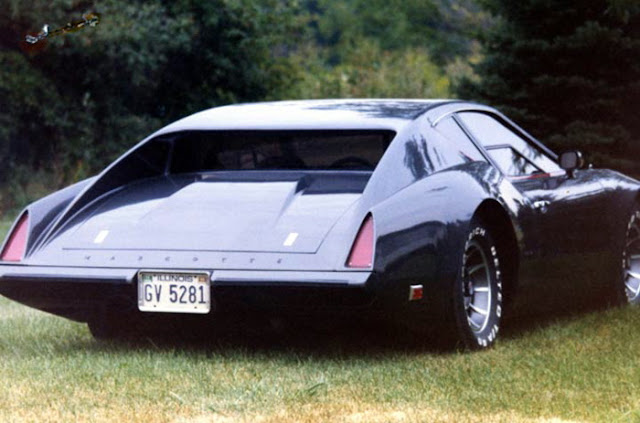The Bolwell Ikara Story
Campbell and Graeme Bolwell founded their Australian kit-car business in 1963 and within three years they were building a fastback two-seater sportscar that could hold its own against many more expensive products from the major manufacturers of the day. As the Bolwell's hands-on skills in fiberglass manufacturing techniques improved, the pair began to expand their ambitions. This would lead to their first commercial model, the Bolwell Mk. 4, selling over 200 units. It was a testament to the brother's entrepreneurial flair and dedication to the dream.
The brothers would continue their streak with increasingly competent and desirable cars like the MK7 and legendary Nagari in the ensuing years. Hundreds of cars were produced, and the future was looking bright in the mid-1960's, but various factors conspired to dim that light a bit.
As was the case with other specialty carmakers, during this era, the energy crisis of the mid 70's ultimately spelled the end of the Bolwell brother's foray into the kit car business. Australian regulatory changes, enacted by the federal government, made survival very difficult for the company as safety standards required a new car to be crashed into a concrete block for test purposes. This was not an economical proposition for a small manufacturer producing less than 100 cars a year.
After a restructuring and a rebranding into the Bolwell Corporation, the company set about creating a new car called the Ikara. However, the Ikara was not just a new product, it was to be Bolwell's calling card. It was a showcase of their engineering capabilities and extensive experience in fiberglass production. Their design brief, for 1978, was to create a sports car that was fun to drive with none of the compromises of the motor industry’s safe, conventional and boring suburban, designed by committee cars.
The Ikara featured a space frame tubular steel chassis based on sports race car principles, utilizing a built-in roll bar for safety. The drivetrain consisted of a front-wheel drive Volkswagen Golf 1.6 litre transaxle unit, mounted in a mid-engine position with modified gearbox linkages. Using the Golf unit in this way also provided independent rear suspension complete with disc brakes. The front suspension was from a Holden Gemini, which provided an independent front suspension with unequal length wishbones, disc brakes, and rack and pinion steering.
The exterior design followed Campbell Bolwell’s ‘function before fashion’ design principles. It boasted simple Clubman styling utilizing high-strength-to-weight fibreglass panels, whilst offering a ‘pleasing and highly individualized appearance’. The result was akin to a Lotus 7, if it was designed as a set-piece for the movie "Blade Runner". It was cool, if potentially polarizing.
The Ikara was intended to be sold as a kit or component car, as this was the best way for Bolwell to be able to offer the Ikara at anything like an affordable price and without the requirement for Bolwell, as manufacturer, to go through all the ADR testing compliance and regulations that had effectively killed the Nagari.
The Ikara project happened extremely fast, getting from design stage to having an Ikara actually on the road in just over a year. This was mainly as a matter of necessity as the Ikara was conceived as a short run, low volume car, with a correspondingly low budget, so things had to be done as quickly and efficiently as possible. Following a sneak preview to members of the Bolwell Car Club, the Bolwell Ikara was officially launched at a function at Melbourne’s Calder Park Raceway in November 1979.
Bolwell produced a remarkably detailed, 128-page Construction Manual for the Ikara as well as a detailed price list. The manual clearly set out exactly what was required for the owner/builder to complete their Ikara and offered discounted pricing on four product packages. The basic Stage 1 kit started at $4,890 (AUD) where-as the comprehensive Stage 4 kit cost $9,490 (just under the $10,000 price-point). To this the purchaser had to add the cost of Golf and Gemini parts, which could be new or second-hand, and around 150 hours of labor. Sadly, not many buyers emerged and the Ikara project was wound down at the end of 1980, with 12 kits being produced.
In February 1985 arrangements were finalised with a Greek consortium, which purchased the rights and tooling for the Ikara. So, the jigs, moulds, patterns and other tools were all shipped off the Greece. Although the intention was that Ikaras would continue to be produced as both completed car and as kits, and that Bolwell would retain a consultancy role, nothing was ever heard about the Greek Ikaras.
However, Bolwell would survive and successfully ply their fiberglass and plastics know-how in the production of a wide variety of products, from campers to marine hulls. The company has also dipped their toes back into the car market with a series of prototypes of a mid-engine Nagari successor in recent years, but that has yet to see series production.
Among Australia's many makers of specialty cars, over the years, Bolwell remains one of the best known and most loved. The make enjoys a huge fandom in Oz and is supported by several active owner's clubs across the country. It is truly a classic marque.
Sources:
 |
| The Bolwell MK9 Ikari prototype |
 |
| The Bolwell MK9 Ikari, front left |
 |
| The Bolwell MK9 Ikari at front |
 |
| The Bolwell MK9 Ikari |
 |
| The Bolwell MK9 Ikari construction manual |










Comments
Post a Comment